#native American history
Explore tagged Tumblr posts
Text

In celebration of Native American Heritage Month, we recognize the invaluable contributions of the Navajo Code Talkers, whose unique skills played a pivotal role in securing Allied victory during #WWII. Using their Navajo dialect, these brave service members developed an unbreakable code that protected military communications from enemy forces. Their linguistic expertise and cultural heritage became a powerful tool for secure operations in the war's most critical moments.
In 2000, the original 29 Navajo Code Talkers were awarded the Congressional Gold Medal, a tribute to their bravery and impact. Their legacy endures, highlighting an essential chapter in military history and underscoring the lasting importance of preserving Indigenous languages and cultures.
Learn more about the importance of the Code Talkers in this Prologue Magazine article: https://www.archives.gov/publications/prologue/2001/winter/navajo-code-talkers.html
📸: Photograph of Navajo Indian Code Talkers Henry Bake and George Kirk, December 1943. https://loom.ly/LEGuj_A
#WWII#Veterans#Navajo#Navajo Code Talkers#World War II#Military#History#National Archives#Native American History#Native American Heritage Month
588 notes
·
View notes
Text

In celebration of Native American Heritage Month and Indigenous Peoples Month, we reflect on the deep history, resilience, and cultural richness of Indigenous communities.
Sharing these stories allows us to honor traditions and contributions that continue to shape our shared world. For those interested in learning more, JSTOR Daily has curated a collection that highlights Indigenous perspectives, art, and histories.
Image: Detroit Publishing Co. Pueblo Indian Woman with Olla. 1902. Trinity College, Watkinson Library.
#jstor#jstor daily#indigenous peoples month#native american heritage month#indigenous peoples#native americans#indigenous history#native american history
499 notes
·
View notes
Text

#usa#israel#hegemony#land grab#colonization#genocide#apartheid#segregation#war criminals#crime against humanity#cancel culture#native american#native american history#palestinian people#palestinian history#heritage#american history
414 notes
·
View notes
Text




Celebrating Indigenous Peoples' Day!
Today the USA marks Indigenous Peoples' Day - to celebrate, have a listen to these podcasts to learn some of the Indigenous, queer history of what is now the USA.
Osh-Tisch
Osh-Tisch was a batée born in the mid-19th-century Crow Nation. Batée is a uniquely Crow gender identity, describing a person assigned male at birth, who performs female as well as specifically batée social roles. Osh-Tisch was renowned for their skills as a craftsperson, their bravery in the 1876 Battle of the Rosebud, and as the best poker player in the region. In the face of attempts by the US government to force assimilation to Western ideas of gender, Osh-Tisch’s community fought for their right to express their identity.
[Image source: Will Roscoe’s Changing Ones: Third and Fourth Genders in Native North America]
We'wha
Born c.1849 at Zuni (now in New Mexico), We’wha was a lhamana - a Zuni gender including both masculine and feminine roles. Like many lhamana, We'wha was a highly skilled craftsperson, proficient in both traditionally masculine, and traditionally feminie crafts. In 1885, We’wha travelled to Washington DC as a representative of the Zuni people, where they worked with anthropologists and the Smithsonian museum to demonstrate and share information about Zuni crafts and culture, and met US President Grover Cleveland.
[Image source]
Bíawacheeitchish
Born in the early 1800s, Bíawacheeitchish (Woman Chief) was a Gros Ventre woman who lived amongst the Crow people. She was skilled in traditionally masculine pursuits like riding, hunting and warfare. Polygamy was common amongst the Crow, and Bíawacheeitchish married four women. Her military prowess led to her becoming one of the most respected Crow chiefs.
[Image source]
Kapaemahu
According to Hawai'ian oral histories, in around the 1500s, four healers visited Honolulu from what are now the Society Islands. These healers - named Kapaemahu, Kahalao, Kapuni, and Kinohi, were māhū, a gender recognised in Kānaka Maoli (Native Hawai’ian) culture, with a particular focus on healing and caring roles.
When they departed Hawai'i, the four māhū left behind four huge stones as a memento of their visit, imbued with their healing powers, which are still revered in Hawai'i today.
[Image source]
#indigenous peoples day#indigenous history#crow history#hawaiian history#zuni history#queer history#two-spirit#two-spirit history#lgbt history#lgbtq#native american history
561 notes
·
View notes
Text

Copper axe heads. Discovered in the Great Lakes region of the United States. From the Old Copper Culture. Old Copper Culture was active throughout the Great Lakes region from 7500 to 1000 BCE. They mined copper (hence the name) and made arrowheads, axes, fishhooks, bowls, religious iconography and much more with the metal. As time went on the metal became less practical for tool production and took on a more ornamental purpose.
The ancient axes pictured above are located in the Milwaukee Public Museum (MPM).
#art#culture#history#ancient culture#ancient art#ancient#old copper complex#old copper culture#native american history#american history#american art#copper#archeology#anthropology#native american#Milwaukee#Milwaukee public museum#museum#prehistoric
230 notes
·
View notes
Text

R. C. Gorman (deceased)
Gender: Male
Sexuality: Gay
DOB: 26 July 1931
RIP: 3 November 2005
Ethnicity: Native American (Navajo)
Occupation: Artist, sculptor
Note 1: Opened the Navajo Gallery in Taos in 1968. It was the first Native American-owned art gallery. In 1973, he was the only living artist whose work was shown in the "Masterworks from the Museum of the American Indian" exhibition held at Metropolitan Museum in New York City. Two of his pieces were selected for the cover of the exhibit's catalog.
Note 2: Upon his death, New Mexico's governor Bill Richardson ordered flags flown at half-staff in his honor.
Note 3: Referred to as "the Picasso of American Indian artists" by The New York Times.
#R. C. Gorman#R C Gorman#Rudolph Carl Gorman#native american history#lgbt history#lgbt#male#gay#1931#rip#historical#poc#native#native american#artist#sculptor#first#popular#popular post#200
314 notes
·
View notes
Text
Iroquoian Wooden Armor
by Malcolm P.L.
An interesting series of videos where this gentleman researches, then constructs a set of replica wooden armor as used by the Iroquois before European contact.
Part I : Introduction
youtube
Part II : Overview
youtube
Part III : Thoughts on the Back Shield
youtube
Part IV : Socio-economics of Iroquoian Armor
youtube
Part V : The Iroquoian Shield
youtube
230 notes
·
View notes
Text
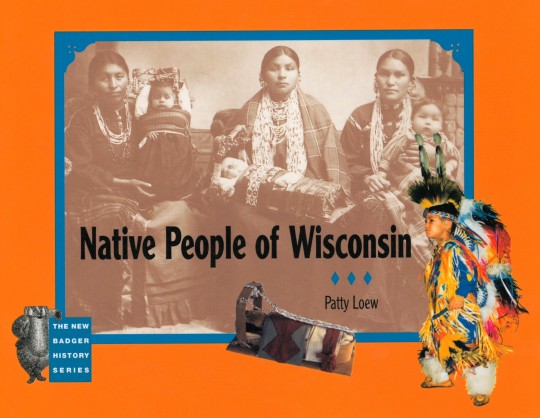
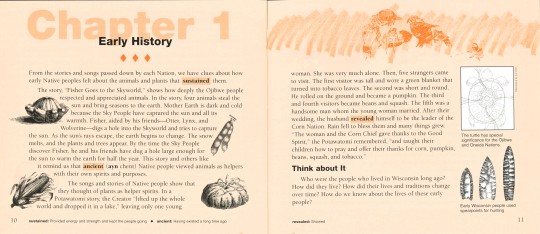
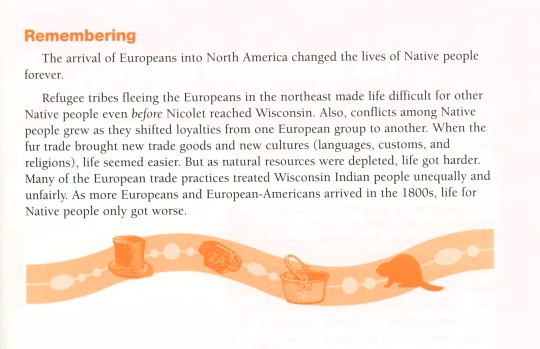
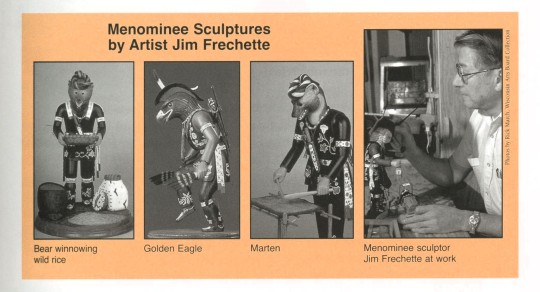
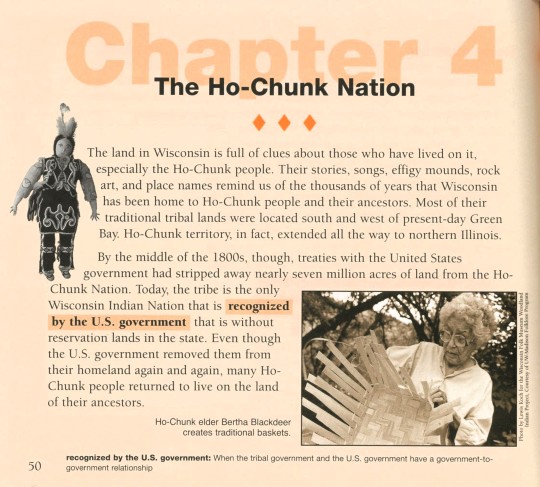

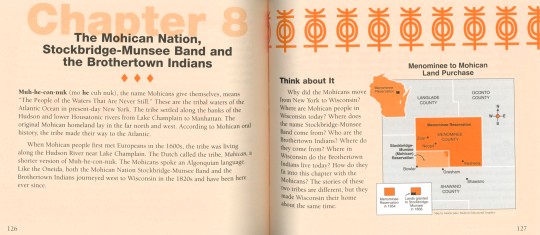

Native Wisconsin
Native People of Wisconsin by Ojibwe scholar and journalist Patty Loew (b.1952), published in 2003 by the Wisconsin Historical Society Press in Madison, Wisconsin, is a book for young readers about the twelve Indian Nations that live in Wisconsin, including my tribe, the Stockbridge-Munsee Band of Mohicans. The book also includes the history of the First People in Wisconsin and the impact of European arrivals on Native culture.
Patty Loew, a Wisconsinite and member of the Bad River Band of the Lake Superior Ojibwe tribe, is a journalist, professor, author, community historian, broadcaster, documentary filmmaker, academic, and advocate. This children's book is a testament to her work, showcasing tribal narratives that encompass different methods through which Indigenous communities preserve their history. With a particular emphasis on oral tradition, this work is a valuable resource for educators and individuals interested in Native American history and will surely captivate young readers.
View other posts from our Native American Literature Collection.
View more from our Historical Curriculum Collection.
-Melissa (Stockbridge-Munsee), Special Collections Graduate Intern
#native people of wisconsin#patty loew#children's books#wisconsin indians#native americans#wisconsin historical society press#indigenous#oral traditions#native american history#native history#native american literature#indigenous peoples#indigenous america literature collection#historical curriculum collection
104 notes
·
View notes
Text

Treaty Between the United States and the Delaware, Potawatomi, Miami and Eel River Indians at Fort Wayne, September 30, 1809
Record Group 11: General Records of the United States GovernmentSeries: Indian TreatiesFile Unit: Ratified Indian Treaty 57: Delaware, Potawatomi, Miami, and Eel River - Fort Wayne, September 30, 1809
James Madison, President of the United States of America.
To all and singular, to whom these present shall come, Greeting.
Whereas a certain Treaty between the United States and the Delaware, Put=
= watime, Miami and Ell River Tribes of Indians was concluded and signed at Fort Wayne on the 30th day of Sept
= tember last past, which Treaty is as follows:
A Treaty Between the United States of America and the Tribes of Indians called the
Delawares, Patawatimies, Miamies & Eel River Miamies
James Madison President of the United States by William Henry Harrison Governor and com-
=ander in Chief of the Indiana Territory superintendent of Indian affairs and commissioner plenipotentiary
of the United States for Treating with the same Indian Tribes & the Sachems Head men & Warriors
of the Delware Putawatime Miami & Eel Rive Tribes of Indians have agreed and concluded upon
the following Treaty which when ratified by the said President with the advice & consent of of the
Senate of the United States shall be binding on said parties
Article 1st. The Miami & Eel River Tribes & the Delewares & Potawatimees as their allies agree to cede to the United
States all that Tract of Country which shall be included between the boundary line established by the
Treat of Fort Wayne the Wabash and a line to be drawn from the mouth of a creek called Racoon
Creek emptying into the Wabash on the South east side about twelve miles below the mouth of
the Vermillion River so as to strike the boundary line established by the Treaty of Grouseland at such
a distance from its commencement at the north east corner of the Vincennes Tract, as will leave
the Tract now ceded thirty miles wide at the narrowest place, And also all that Tract which
shall be included between the following boundaries Vizo beginning at Fort Recovery thence southwardly along
the General boundary line established by the Treaty of Greenville to its intersection with the boundary
line established by the Treaty of Grouseland thence along said line to a point from which a line
drawn parallel to the first mentioned line will be twelve miles distant from the same & along the said
parrallel line to its intersection with a line to be drawn from fort Recovery parallel to the line esta-
blished by the said Treaty of Grouseland
Article 2 The Miamies explicitly acknowledge the equal right of the Delewares with themselves to the
Country Watered by the White River, But it is also to be clearly understood that neither
party shall have to right of disposing of the same without the consent of the other, And
any improvements which shall be made on the said land by the Delewares or their Friends the
Mochecans shall be theirs forever
Article 3 The compensation to be given for the cession made in the first article shall be as follows Vizo
To the Delewares a permanent annuity of five hundred Dollars, To the Miamies a like annuity
of five hundred Dollars, to the Eel River Tribe a like annuity of two hundred and fifty
Dollars, And to the Putawatomies a like annuity of five hundred Dollars
Article 4 All the stipulations made in the Treaty of Greenville relatively to the manner of paying the
annuities and the right of the Indians to hunt upon the land shall apply to the annuities granted
and the land ceded by the present Treaty.
Article 5 The consent of the Wea Tribe shall be necessary to complete the title to the first Tract of land here ceded
a Seperate convention shall be entered into between them & the United States and a reasonable
allowance of Goods given them in hand and a permanent annuity which shall not be less than three
hundred Dollars Settled upon them
Article 6 The annuities promised by the third article & the Goods now delivered to the amount of five Thousand
two hundred Dollars shall be considered as a full compensation for the cession made in
the first article
Article 7 The Tribes who are parties to this Treaty being desirous of putting an end to the depreda-
=tions which are committed by abandoned individuals of their own color upon the
Cattle Horses & of the more Industrious & careful, agree to adopt the following regulations
Viz. When any theft or other depredation shall be committed by any individual or individuals
of one of the Tribes above mentioned upon the property of any individual or individuals
of an other Tribe the Chiefs of the party injured shall make application to the agent of
the United States who is charged with the delivery of the Annuities of the Tribe to which the
offending party belongs whose duty it shall be to hear the proofs & allegations on other side
and determine between themes And the amount of his award shall be immediately
deducted from the Annuity of the Tribe to which the offending party belongs & given to
the person injured on the Chief of his Village for his use
Article 8 The United States agree to relinquish their right to the reser[illegible - reservation?] the old Ouiatenon Town
made by the Treaty of Greenville so [illegible] least as to make no further use of it than for the
establishment of a military Post
Articles 9th The Tribes who are parties to the Treaty being desirous to shew their attachment to their
brothers the Kickapooz agree to cede to the United States the land on the north west side
of the Wabash from the Vincennes Tract to a northwardly extension of the line running
from the mouth of the aforesaid Raccoon Creek and fifteen miles from one width the
Wabash, on condition that the United States shall allow them an annuity of four
hundred Dollars But this article is to have no effect unless the Kickapooz will
agree to it
In Testimony whereof the said William Henry Harrison
& the Sachens & War Chiefs of the before mentioned Tribes have hereunto set
their hands and affixed their Seals at Fort Wayne this 30th of September 1809
[signed] William Henry Harrison
[column 1]
Delawares:
Anderson, for Hockingpomskon, who is absent x [seal]
Anderson x [seal]
Petchekekapon x [seal]
The Beaver x [seal]
Captain Killbuck x [seal]
In presence of
[signed] Peter Jones, secretary to the Commissioner
[signed] John Johnson, Indian agent
[signed] A. Heald, Capt. U. S. Army
[signed] A. Edwards, surgeon's mate
[signed] Ph. Ostrander, Lieut. U. S. Army
[signed] John Shaw
[signed] Stephen Johnston
[signed] J. Hamilton, sheriff of Dearborn County
[signed] Hendrick Aupaumut
[signed] William Wells }
[signed] John Conner } Sworn Intepreters
[signed] Joseph Barron }
[signed] Abraham Ash }
[column 2]
Pattawatimas:
Winemac x [seal]
Five Medals, by his son x [seal]
Mogawgo x [seal]
Shissahecon, for himself and his brother Tuthinipee x [seal]
Ossmeet, brother to Five Medals x [seal]
Nanousekah, Penamo's son x [seal]
Mosser x [seal]
Chequinimo x [seal]
Sackanackshut x [seal]
Conengee x [seal]
[column 3]
Miamis:
Pucan x [seal]
The Owl x [seal]
Meshekenoghqua, or the Little Turtle x [seal]
Wapemangua, or the Loon x [seal]
Silver Heels x [seal]
Shawapenomo x [seal]
Eel Rivers:
[full document and transcription at link]
#archivesgov#september 30#1809#19th century#native american history#native american treaties#lenape#miami indians#potawatomi#eel river#james madison
61 notes
·
View notes
Text

This book shows why public health needs to learn history. Beginning with the European settlement of what became the United States, it addresses the seizure of indigenous lands, the adoption of a labor system that relied on enslaved workers, and nineteenth-century industrialization, continuing up to the present day. The authors ask the larger question of what accounts for exploitative working conditions and environmental degradation.
#uwlibraries#history books#american history#native american history#history of medicine#labor history#environmental history
42 notes
·
View notes
Text
#native american tribes#native americans#native american#native american history#native people#black community#black excellence#black literature#black tumblr
38 notes
·
View notes
Text

Chemawa Indian School Baseball Team, 1939 ⚾
NAID: 5585776
49 notes
·
View notes
Text
World's Oldest Leather Shoe, from Armenia, c.3500 BCE: this prehistoric shoe dates back to about 5,500 years ago, making it the oldest leather shoe in the world
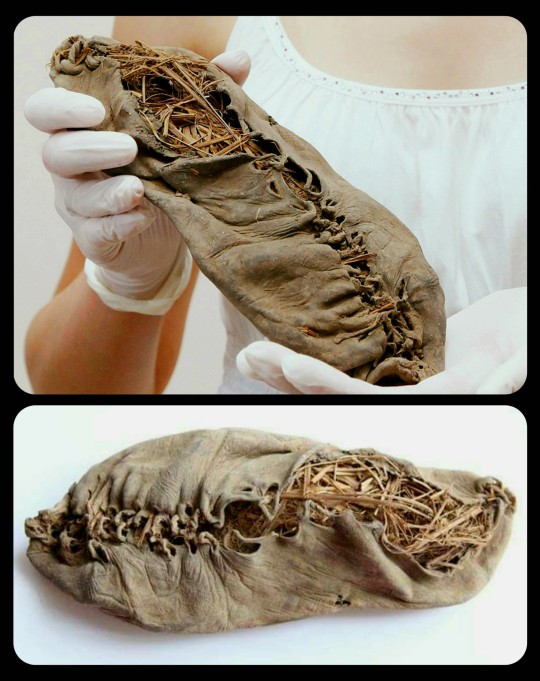
The shoe was found within a cave in the Vayots Dzor province of Armenia, where it had been preserved beneath a layer of sheep dung for more than five millennia.
From the BBC:
At 5,500 years old, the well preserved cow-hide shoe pre-dates Stonehenge by 400 years and the Pyramids of Giza by 1,000 years.
It was made of a single piece of leather and was shaped to fit the wearer's foot, researchers say.
The shoe contained grass, although the archaeologists are uncertain as to whether this was to keep the foot warm or to maintain the shape of the footwear.
Archaeologists put the shoe's remarkable preservation down to the stable, cool and dry conditions in the cave, and the fact that the floor of the cave was covered by a thick layer of sheep dung. This layer of excrement acted as a solid seal, preserving it over the millennia.
According to researchers, the shoe was deliberately buried in a clay-lined pit located within the cave system, though it's unclear why it was originally buried there. The evidence suggests that the shoe was more than just a ritual object -- an imprint of the wearer's big toe is still visible in the leather, and there is a significant amount of wear along the heel and ball of the foot.
This is the oldest leather shoe that has ever been discovered, but older shoes made of plant fiber have been found at sites in Missouri and Oregon. The oldest shoes ever discovered come from Oregon's Fort Rock Cave, where archaeologists unearthed dozens of sandals dating back to about 10,000 years ago.

Sandals from Fort Rock Cave, Oregon
Sources & More Info:
National Geographic: World's Oldest Leather Shoe Found--Stunningly Preserved
BBC: 'Oldest Leather Shoe' Discovered
The Bulletin: Viral Story about World's Oldest Shoes Failed to Mention Ancient Fort Rock Footwear
Oregon Encyclopedia: Fort Rock Sandals
#archaeology#history#artifact#anthropology#prehistoric#fashion#leather shoe#armenia#prehistoric clothing#preservation#crafting#leather work#ancient history#fort rock cave#oregon#prehistoric footwear#sandals#native american history#world's oldest shoes
122 notes
·
View notes
Photo
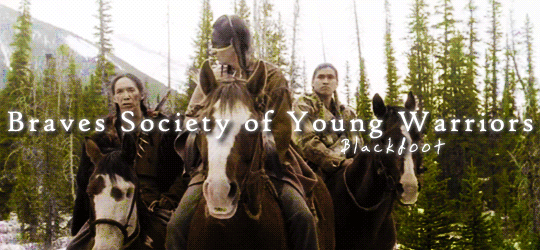







[image description: gifs stacked vertically of Native American warriors of various tribes, in traditional attire and in the fashion of their tribe. Text overlays on top of each gif, labeled, in order: “Brave’s society of Young Warriors, Blackfoot.”, “Women Warrior’s Society, Cheyenne.”, “Black Knife Society, Comanche.”, “Okichitaw, Cree.”, “Crazy Dogs, Crow.”, “Koitsenko, Kiowa.”, “Kit Fox Society, Lakota.”, “Iruska, Pawnee.”. end image description.]
Plains Native American Warrior Societies
(not an exhaustive list)
#historyedit#history#native american#plains native#plains indian#ndn#indigenous#native american history#first nations history#american history#canadian history#justin's edits
449 notes
·
View notes
Text

Choctaw Ball Game by C. Terry Saul (Choctaw/Chickasaw) American. 1947 CE.
Philbrook Museum of Art.
#c. Terry Saul#Choctaw#Chickasaw#Chahta#american art#American history#philbrook museum of art#museum#art#culture#indigenous art#indigenous#native american history#native american#1940s#history
71 notes
·
View notes
Text


Dorothy Davids
Gender: Female
Sexuality: Lesbian
DOB: 2 May 1923
RIP: 4 October 2014
Ethnicity: Native American (Munsee)
Occupation: Teacher, activist, civil servant
Note: First Native American student to graduate from Stevens Point University
#Dorothy Davids#lgbt history#native american history#lesbianism#lgbt#female#lesbian#1923#rip#historical#native#poc#native american#teacher#activist#civil servant#first
106 notes
·
View notes